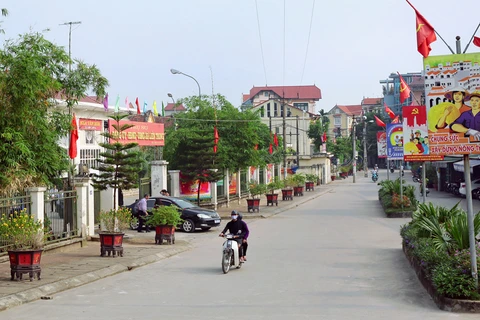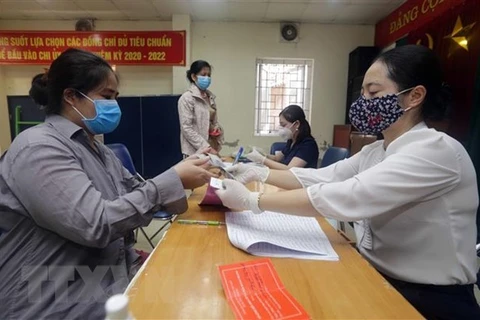Hanoi (VNA) – The capital city of Hanoi has completed its poverty reduction targets two years earlier than scheduled during the period of 2016-2020, with no communes and villages in extremely poor conditions.
Based on the multi-dimensional poverty criteria for 2016-2020, poor households in Hanoi accounted for 3.64 percent of the total in 2016. Poor households in the city were mainly found in rural areas (90 percent).
The city set the goal to reduce the rate to below 1.2 percent by 2020. The rate was reduced to 1.12 percent at the end of 2018, two years ahead of the set target.
The poverty rate in Hanoi further dropped to 0.42 percent at the end of 2019. Among 30 districts of the city, the urban districts of Cau Giay and Hai Ba Trung no longer have any poor households.
According to Nguyen Quang Hong, director of Cau Giay district’s Department of Labour, Invalids and Social Affairs, the district had conducted surveys of poor households on the cause of poverty and the beneficiaries’ specific needs for support. Those surveys helped the district identify the most suitable and effective help to each household, ensuring they rise out of poverty in a sustainable manner.
The city’s administration considers reducing poverty and ensuring social security as a key socio-economic development task, so has issued many specific mechanisms and policies for poverty reduction.
Deputy Director of the city’s Department of Labour, Invalids and Social Affairs Hoang Thanh Thai said, over the past time, many districts and towns in the city have taken solutions to perform economic development tasks and build new-style rural areas to reduce poverty.
Although the State budget must be spread around many socio-economic fields, the capital still gives priority to improving quality of life and municipal social security policies have become increasingly comprehensive.
Every month, the city provides financial support to elderly people who can’t look after themselves and those with serious health conditions who can’t work. Every year, the city provides loans via the Bank for Social Policies to help poor households and people with disabilities develop businesses.
In recent years, the city has paid a monthly allowance to more than 192,000 social policy beneficiaries (with a total budget of some 1 trillion VND a year). More than 2,700 elderly people, people with disabilities, homeless people and poor children have been taken care of at social protection centres.
The poor households also received support to repair or build houses. During 2016-2020, the city has helped with the building and reparation of 7,565 houses for poor families. More than 75,000 people who are beneficiaries of social policies have received vocational training. Along with this, these disadvantaged groups have also been provided with preferential loans worth up to 2.4 trillion VND (nearly 104 million USD).
During the COVID-19 pandemic, the city has provided financial support to more than 500,000 affected people to the tune of 600 billion VND.
Due attention has also been paid to the 872,000 elderly people and more than 101,000 persons with disabilities in the city. Local administrations provided them with support in diverse forms, from granting free bus passes, subsidies for health insurance, preferential loans to free medical checks and medicines.
Thai said that Hanoi would continue to devote resources to sustainable poverty reduction, ensuring social security for all people with a focus on disadvantaged groups, ethnic minorities and people in remote areas.
Along with reviewing poor households lists, localities must be more flexible in providing support for households to suit the characteristics of each locality and family.
“With these drastic solutions, the poverty reduction and social security causes of the capital have been achieving many positive results. This helps promote the spirit of solidarity, the strength of the political system and the whole society, who are joining hands for the poor and not leaving anyone behind during the development cause,” Thai said./.






















